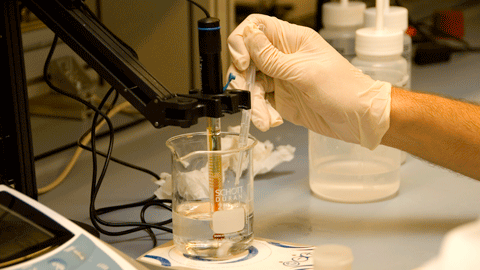The scientific output of universities has almost doubled in the last decade
According to data from the IUNE 2023 Observatory of the A4U Alliance, the scientific production of the Spanish university system has grown to almost double in the last ten years, with an average annual growth of 7%.

The scientific production of the Spanish university system (SUE) has grown considerably in the last decade to almost double, going from 60,294 publications in 2012 in the Web of Science (WoS) database to 102,987 publications in 2022 , with an average annual growth of 7%. 92% of this production corresponds to public universities compared to 8% of private institutions, although the teaching staff of the latter has increased considerably in this period (with an average of 7.46%) as opposed to the growth negative of public university templates (with an average of -0.54%). These are some of the data that emerge from the latest annual report of the IUNE Observatory which has just been published and belongs to the Aliança 4 Universitats (A4U), formed by the Autonomous Universities of Barcelona (UAB), Autònoma de Madrid ( UAM), Carlos III of Madrid (UC3M) and Pompeu Fabra (UPF).
This report, coordinated by the INAECU Institute (UAM-UC3M), monitors SUE's R+D+i through 42 indicators around seven major dimensions: scientific activity, analysis by areas of knowledge, training capacity, competitiveness, financing, innovation and teachers. In general, "a certain deceleration is observed in the fall of the main performance indicators of the SUE that were manifested in the years close to the beginning of the financial crisis of 2008, as well as their gradual recovery in the years close to 2020" , indicates this post.
With regard to research productivity, the report points out that it has increased during the period studied. In this sense, as of 2018, all public universities have exceeded the value of one publication per professor per year. The universities that stand out the most in this field are Pompeu Fabra University (UPF), the Autonomous University of Barcelona (UAB), the University of Barcelona (UB), the Rovira i Virgili University (URV), the Autonomous University of Madrid (UAM ), the Carlos III University of Madrid (UC3M), the Miguel Hernández University (UMH), the University of Girona (UdG) and the University of Valencia (UV).
Regarding the scientific collaboration data, about half of the publications are made with international co-authors, while almost a third of the publications are made in national collaborations. In relation to emerging scientific production included in the ESCI index (Emerging Sources Citation Index), which mainly includes art, humanities and social science publications, it has almost doubled since 2011, and public universities are responsible for 89% of this.
The impact of research carried out by Spanish universities has grown throughout the period studied, taking into account the number of annual citations. However, there has been a general stagnation in visibility if we look at publications in journals in the first quartile. On the other hand, the number of open access publications has almost doubled since the start of the series, and in 2021 it represented 68% of the total number of publications.
In terms of innovative activity, the number of patents registered by the Spanish Patents and Trademarks Office (OEPM) has been falling since 2015, with the minimum value of the series in 2020, and increases slightly in 2021.
Regarding the number of permanent teachers (officials and with indefinite contracts) of the SUE, an increase has been observed between the years 2012 and 2021, mainly due to the increase in teaching staff at private universities, which have grown in this period at a global annual rate of 7.46%. However, in this decade public university staff have lost 3,750 teachers (an average negative growth of -0.54%).
Regarding the attraction and training of talent, different trends are also observed, since while FPI and FPU contracts decrease moderately in the period studied, Juan de la Cierva contracts experience considerable growth. On the other hand, the Ramón y Cajal contracts are fired due to the fact that the Juan de la Cierva incorporation contracts have been absorbed by the Ramón y Cajal call.
The IUNE Observatory has the support of the Ministry of Universities, as well as a large number of institutions such as the National Agency for Quality Assessment and Accreditation (ANECA), the Conference of Rectors of Spanish Universities ( CRUE), the Center for Industrial Technological Development (CDTI), the Quality Agency of the University System of Catalonia (AQU Catalunya) and the Quality Agency of the Basque University System (Unibasq).
More information:
https://iune.es/